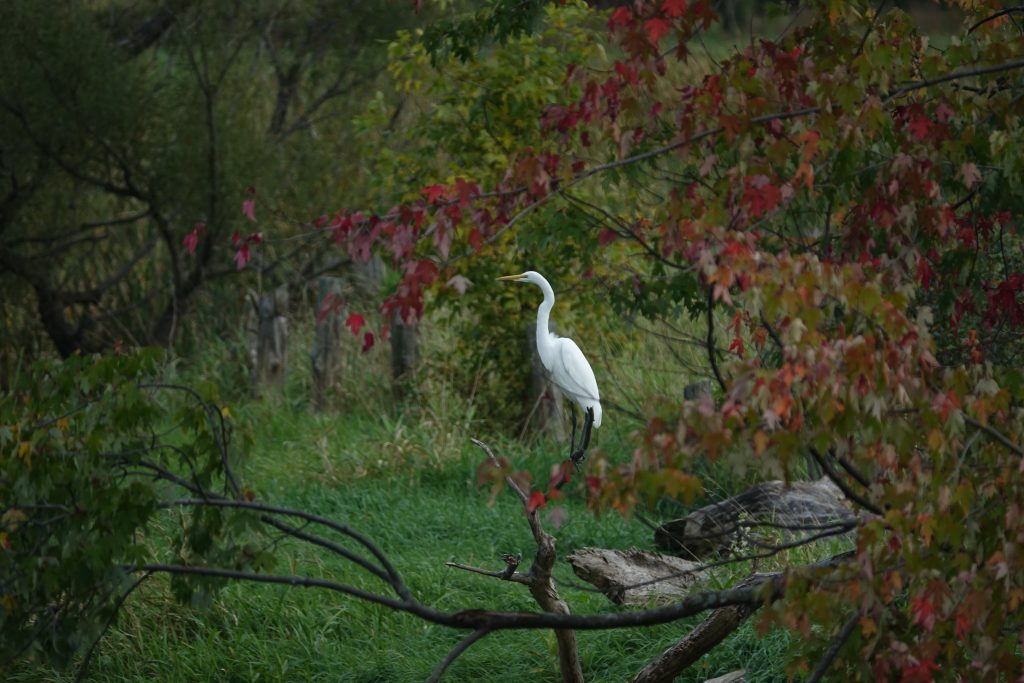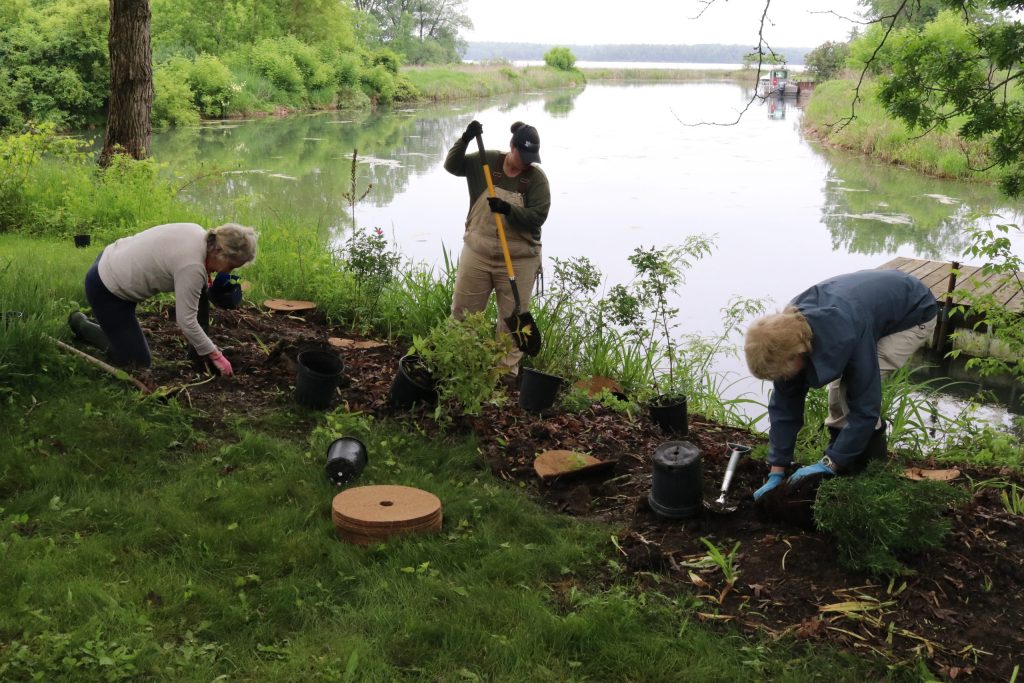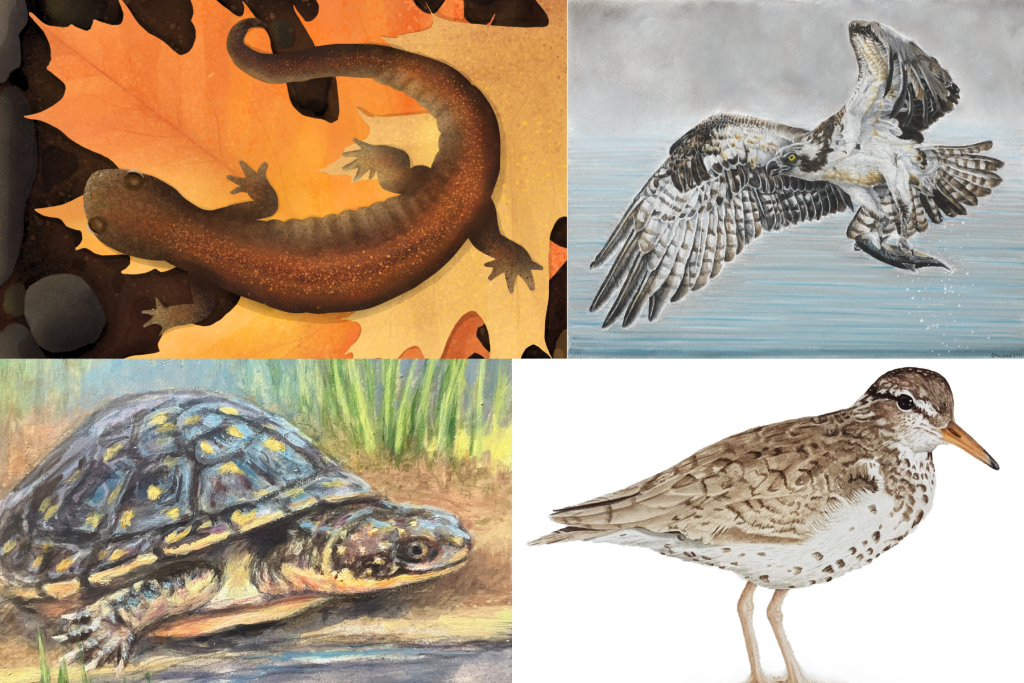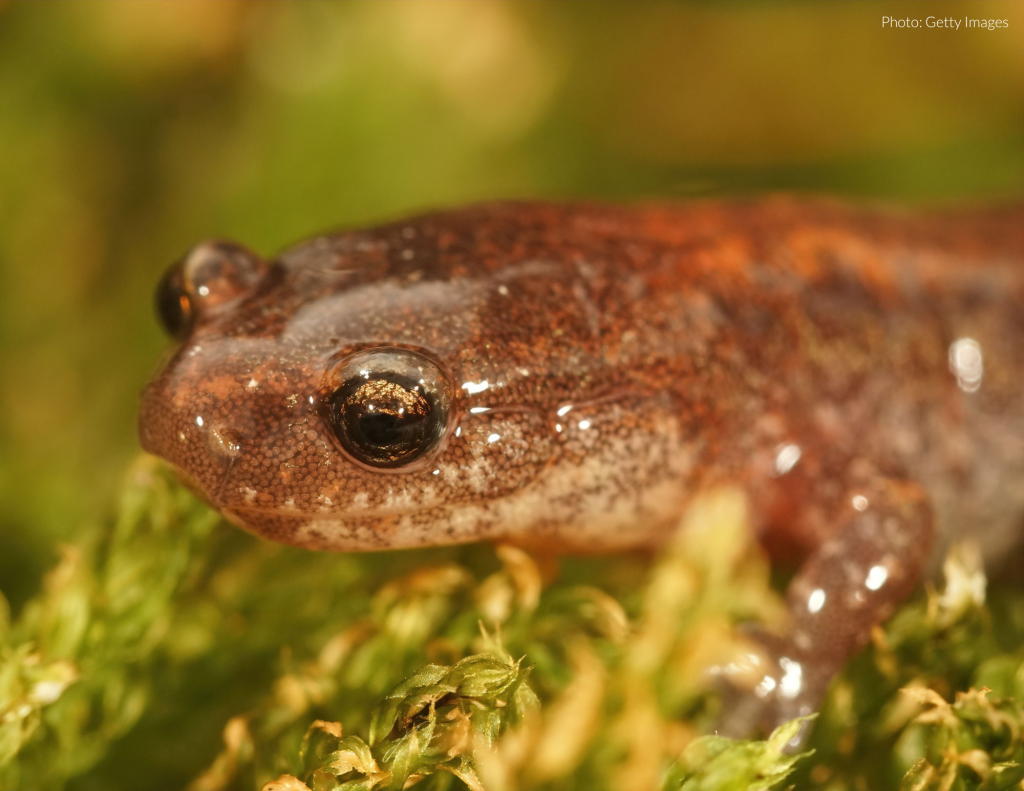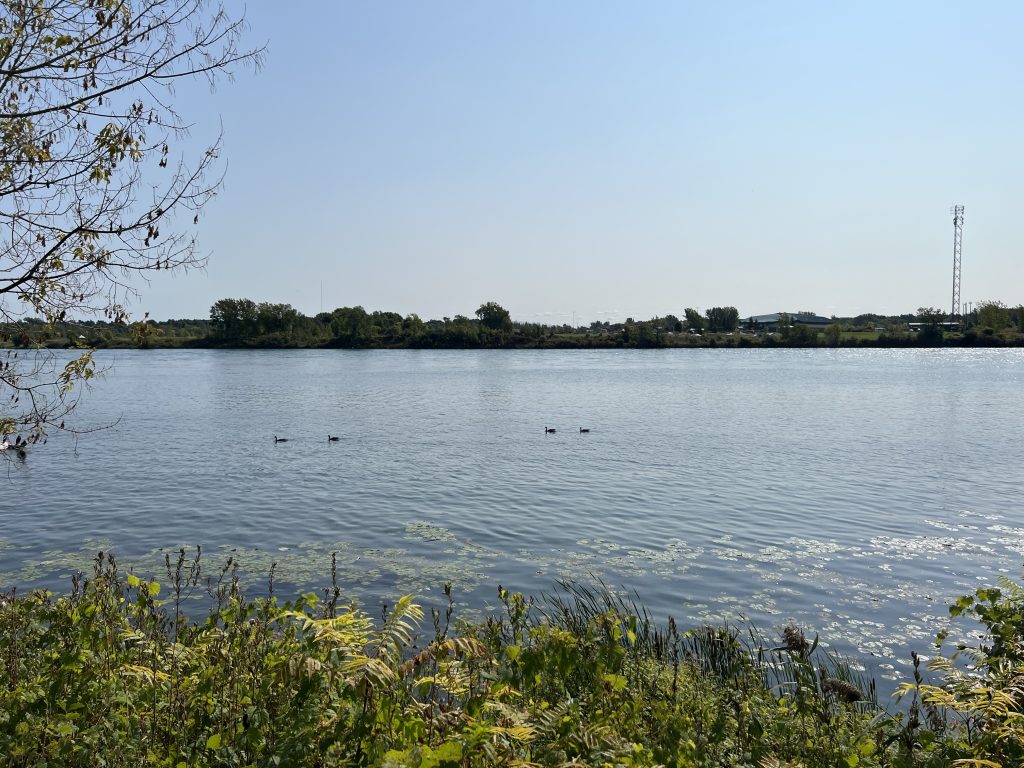Watersheds Canada is seeking waterfront property owners in the St. Lawrence River (Cornwall) Area of Concern to naturalize their shoreline using native grasses, trees, shrubs, and wildflowers. A healthy shoreline buffer can help protect your property from erosion and flood damage, create habitat for wildlife, and improve water quality.
It has been thirty-seven years since the St. Lawrence River at Cornwall was first designated as an Area of Concern (AOC) in 1987. Over the decades, immense pressure from industry, contamination, and population growth has strained the health of the river and the wildlife that live there. This collaborative project between Watersheds Canada, Mohawk Council of Akwesasne, Raisin Region Conservation Authority, River Institute, and Great River Network will continue to work towards addressing contributing factors of poor water quality and major shoreline habitat loss experienced within the St. Lawrence River AOC.
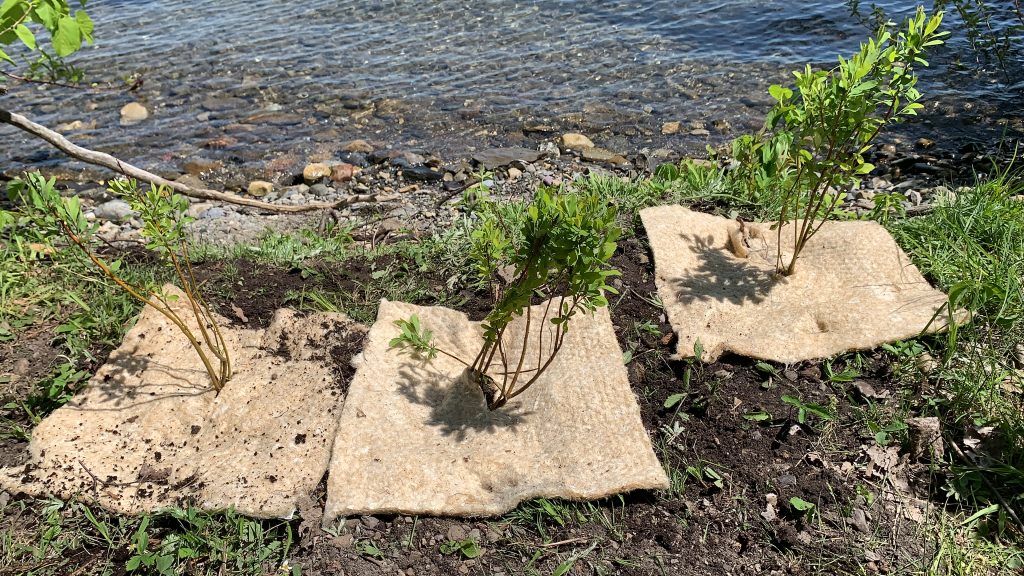
This project through The Natural Edge will contribute to the actions of the Remedial Action Plan to restore the St. Lawrence River (Cornwall) Area of Concern. According to the St. Lawrence River Remedial Action Plan website, the status of an AOC is determined by “assessing the state of local environmental conditions against fourteen different beneficial use impairments, as identified in the Great Lakes Water Quality Agreement”. The delivery of the Natural Edge Program will directly address the legacy issues of ‘Loss of Fish and Wildlife Habitat’ and ‘Eutrophication or Undesirable Algae’ that have contributed to the AOC status for decades.
Eligible waterfront property landowners will receive a free site visit which provides advice and recommendations to improve shoreline health. If planting is recommended, a Shoreline Re-Naturalization Starter Kit can be purchased which includes the creation of a shoreline restoration plan for the property, native plants and materials, as well as education guides on how to maintain shoreline health. Each customized restoration plan will provide detailed descriptions of native trees, shrubs, and wildflowers suitable for planting based on site conditions and landowner preferences. If you are interested in learning more about the project or connecting with project staff for a confidential free site visit, please contact naturaledge@watersheds.ca. A rough map of the St. Lawrence River AOC can be found here.
This project is generously funded by the Government of Canada’s Great Lakes Freshwater Ecosystem Initiative.
About Watersheds Canada
Watersheds Canada is a registered Canadian charity committed to providing programs to communities across the country to engage and help individuals enhance and protect the health of their lakes and rivers. Since 2002, they have delivered freshwater stewardship programming, shoreline naturalizations and assessments, and in-water habitat restorations.
About Mohawk Council of Akwesasne
Mohawk Council of Akwesasne (MCA) is the official governing agency of the northern portion of the Akwesasne Mohawk Territory. It is a community government, which is elected by the residents of the Mohawk Community of Akwesasne.
About Raisin Region Conservation Authority
Raisin Region Conservation Authority (RRCA) is one of Ontario’s Conservation Authorities. RRCA guides the community in the protection, enhancement and restoration of our natural environment through programs that balance human, environmental and economic needs for a sustainable future.
About River Institute
River Institute is a non-profit, charitable organization dedicated to research, education and community outreach on the St. Lawrence River and its tributaries. It is a non‐government organization established in 1994 as a unique community partnership among governments, educators, business and industry, and the Mohawks of Akwesasne.
About Great River Network
The Great River Network is an environmental hub comprised of over 50 river-related organizations, agencies and volunteers who organize initiatives to improve the environment of the Upper St. Lawrence River.


